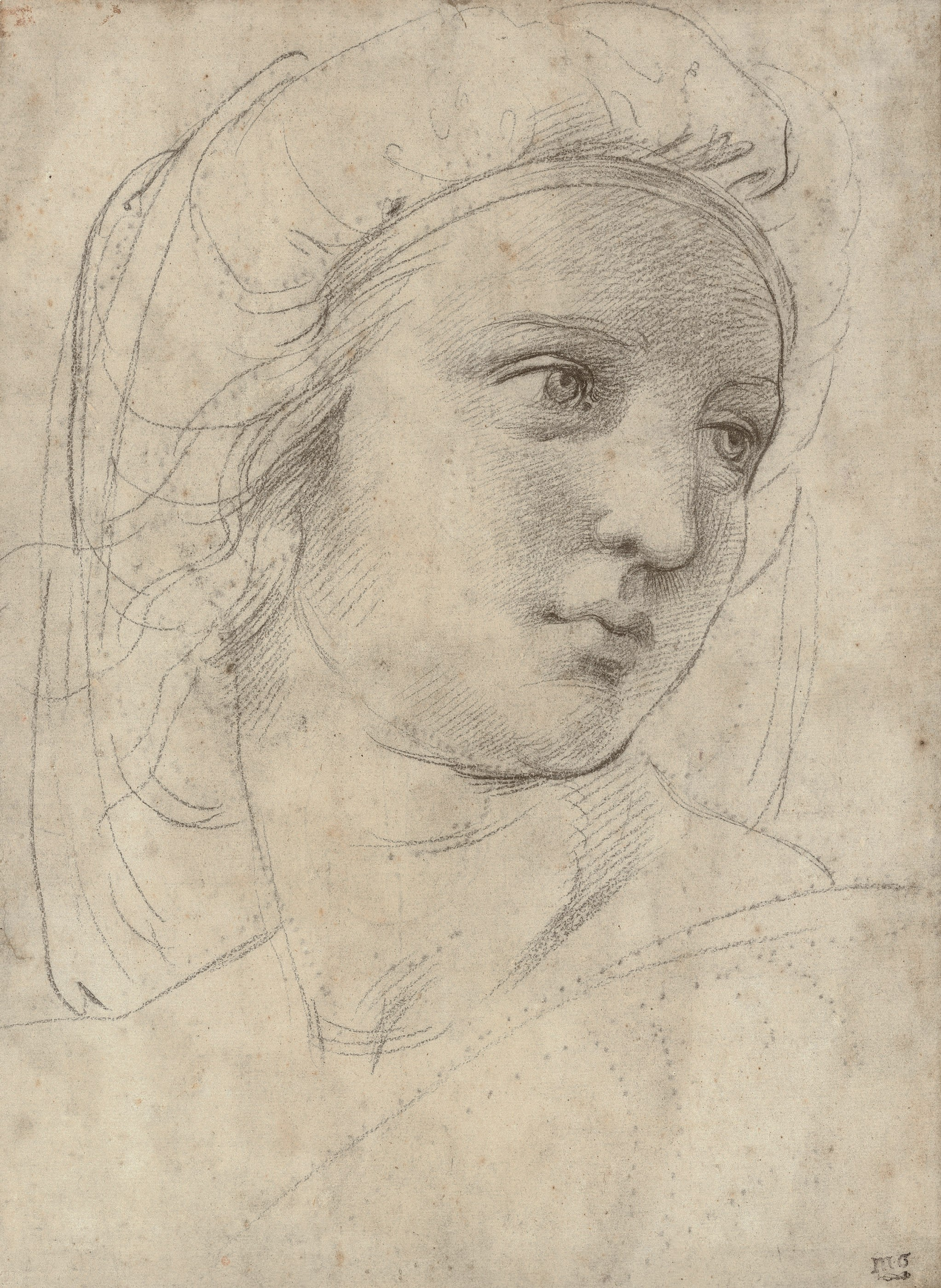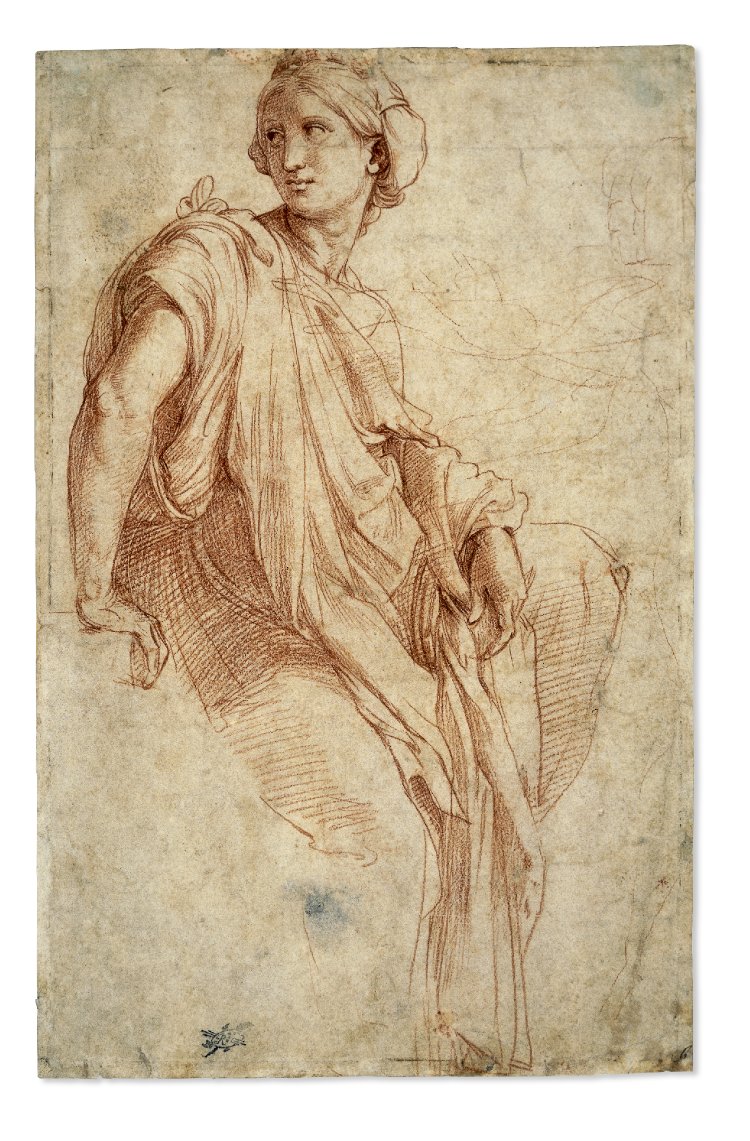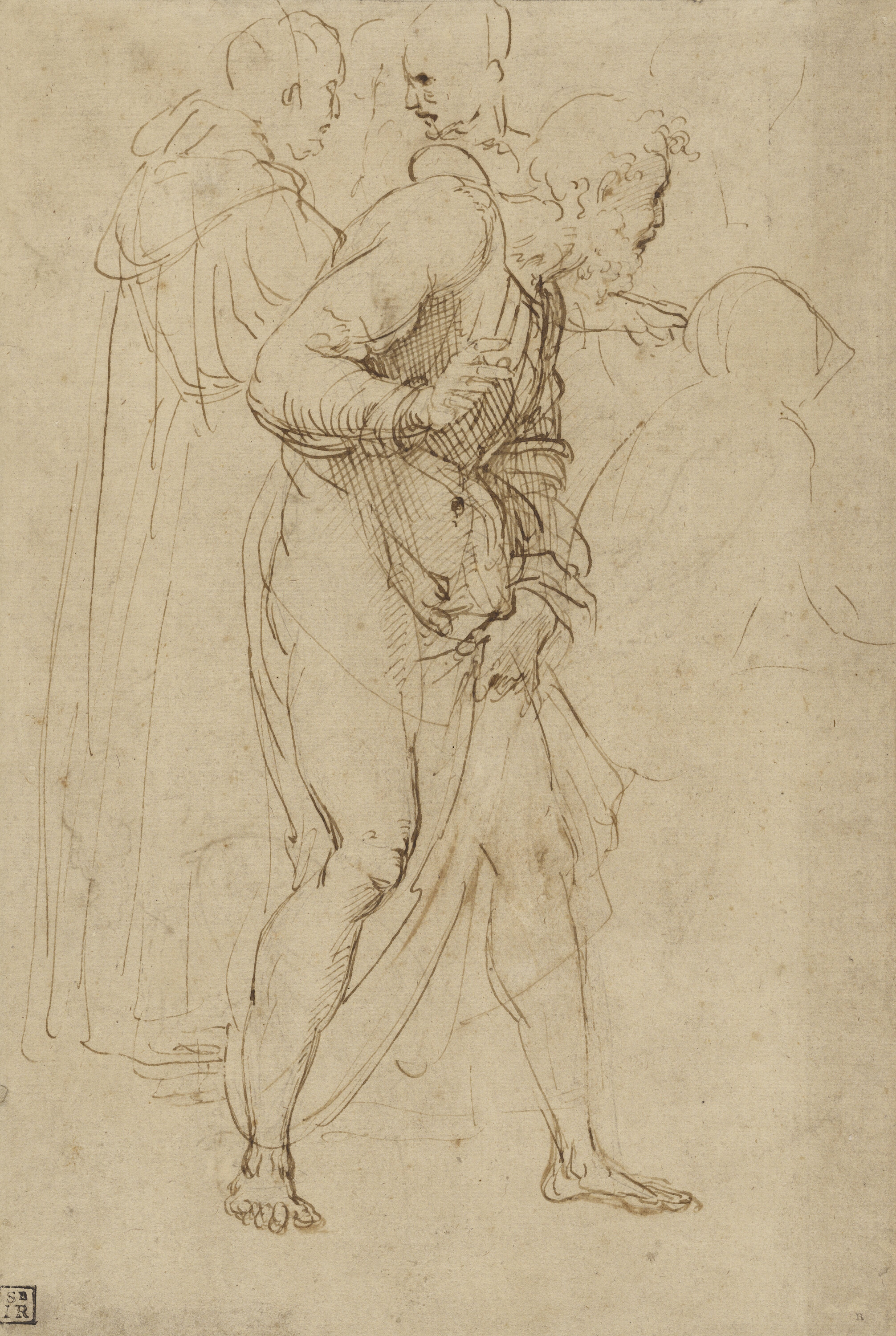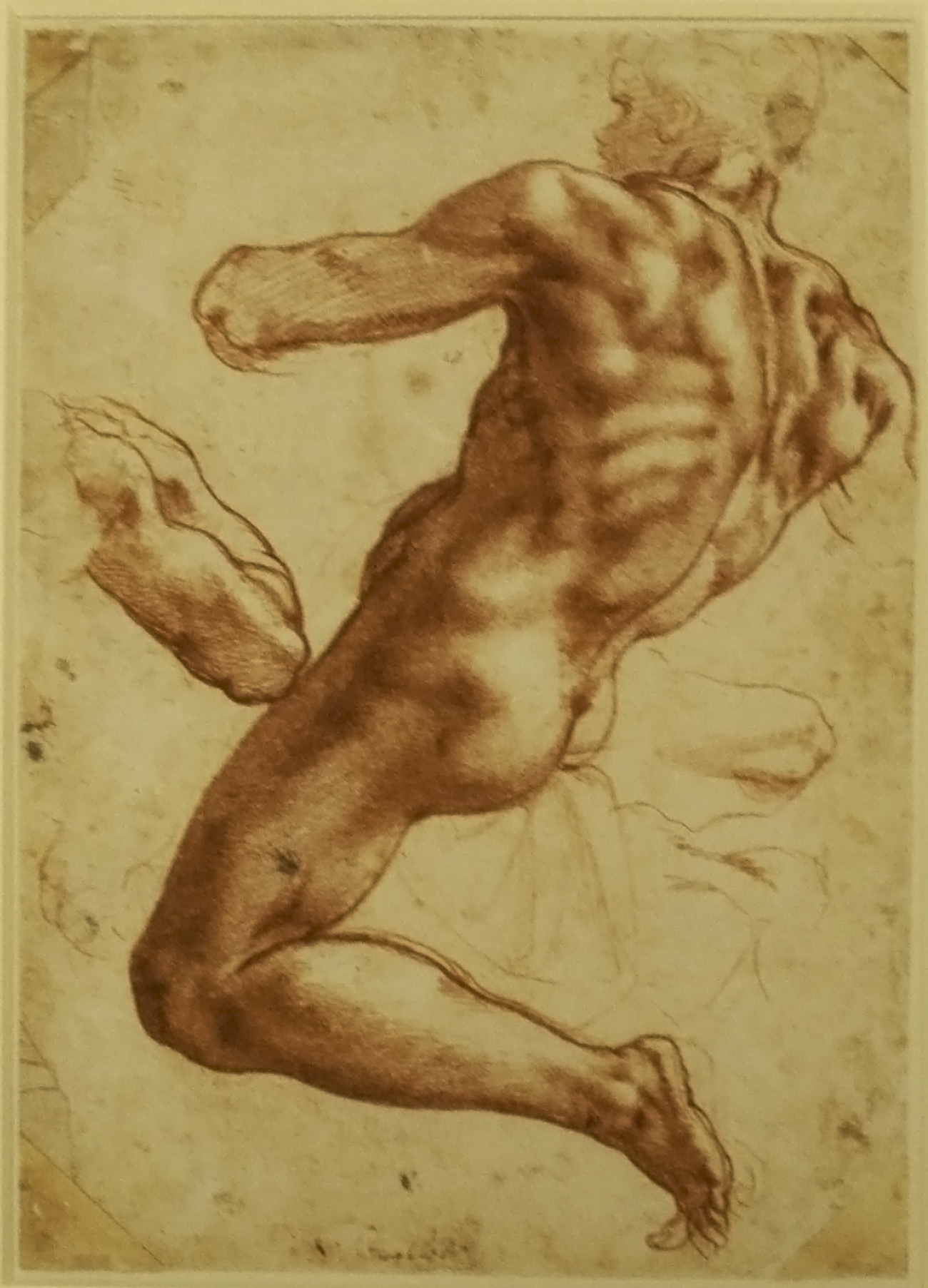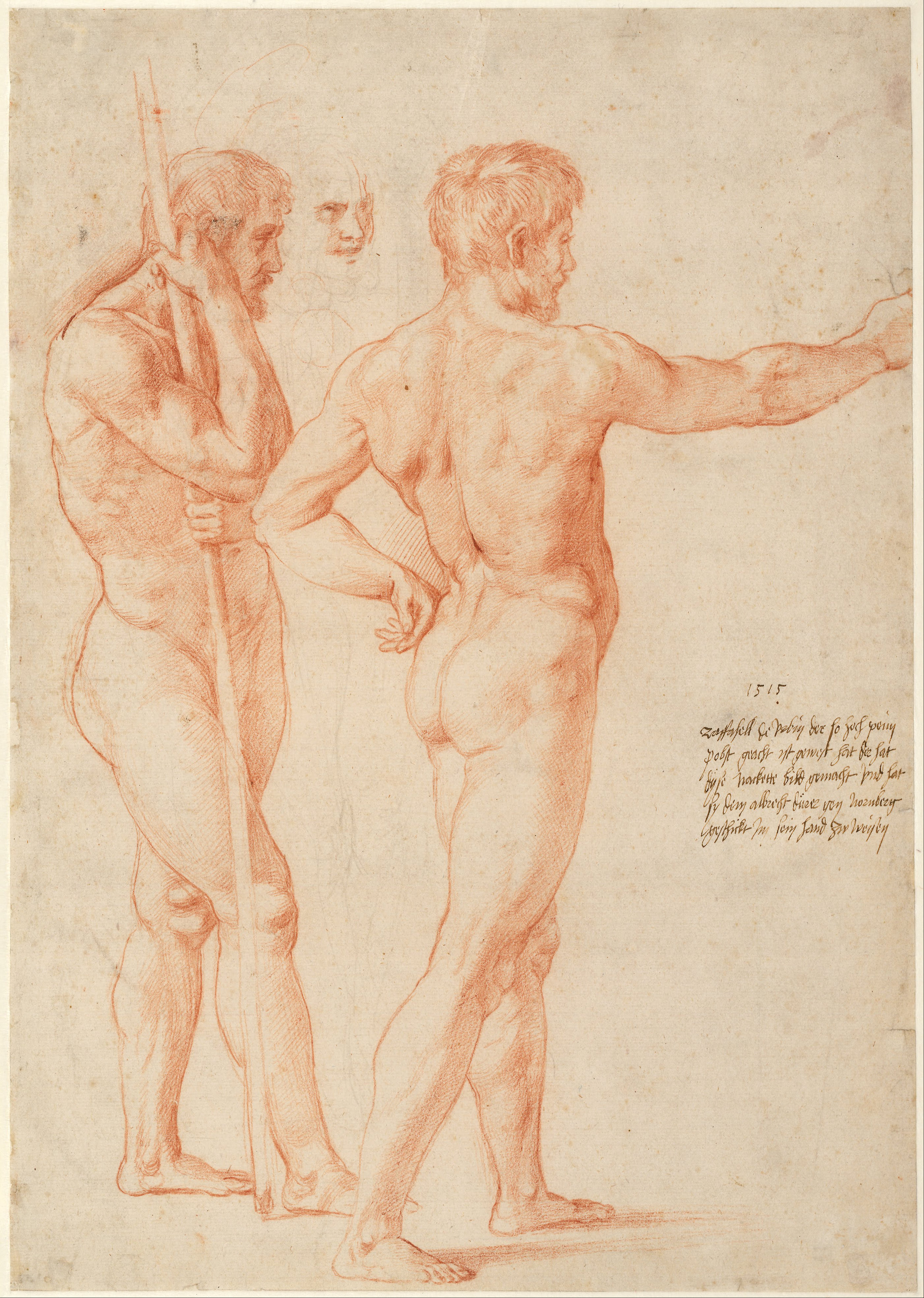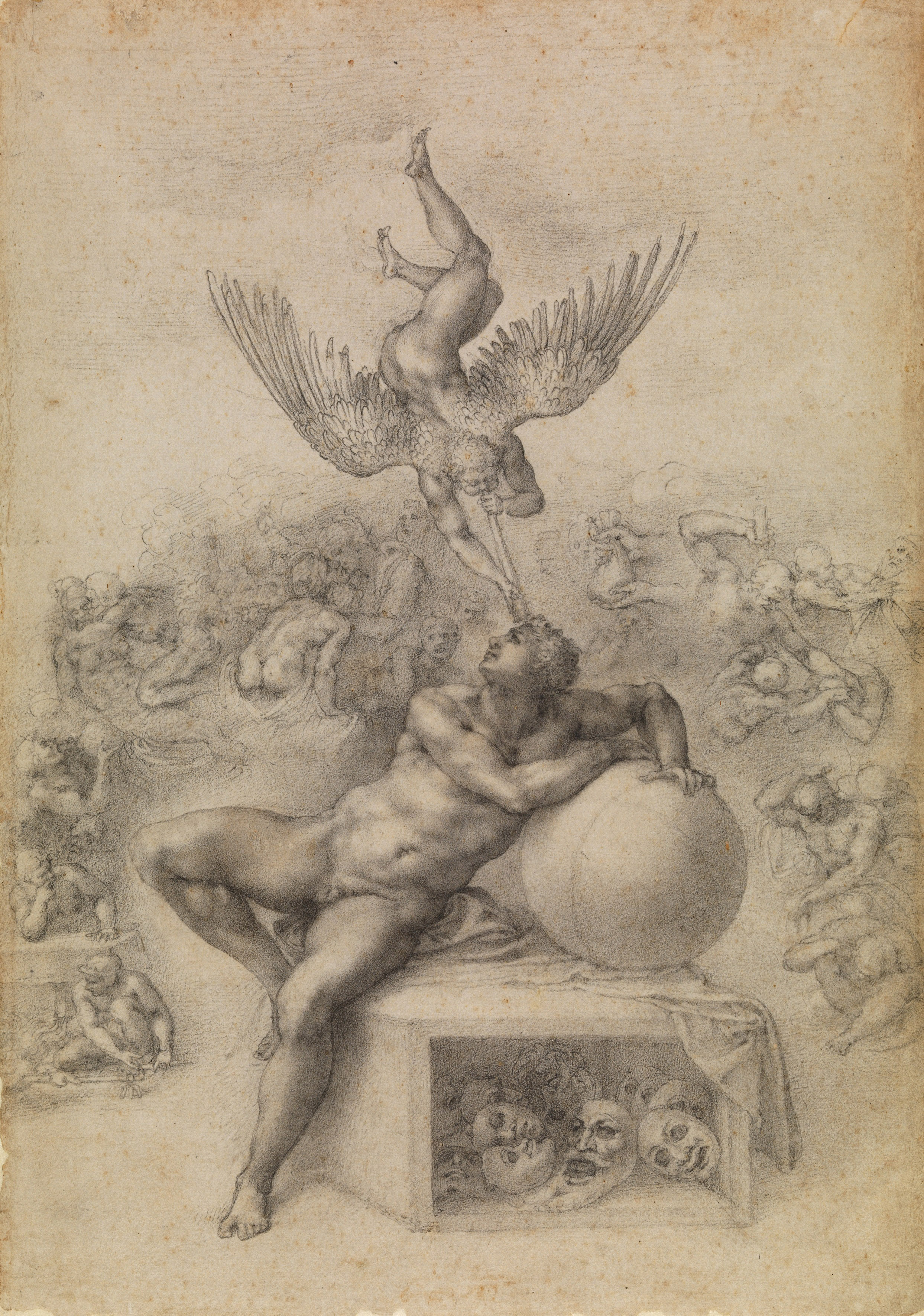MICHELANGELO & RAPHAEL
Although they had radically different approaches, both Michelangelo and Raphael (whose full name was Raffaelo Sanzio) aimed not only to emulate Antique sculpture but to surpass it, adding to its idealised naturalism a sense of the emotions experienced by real human beings. Both artists moved to Rome just as magnificent ancient sculptures like the Laocoön were excavated and placed in the Vatican’s new Belvedere Courtyard. Michelangelo - who Vasari tells us burnt large numbers of his drawings so that no one could witness his creative process - particularly admired the so-called Belvedere Torso. Raphael - commissioned by Pope Leo X with producing drawings of Rome’s ancient monuments - depicted with almost scientific accuracy sculptures like one of the horses on the Quirinale. Some of these images circulated widely as engravings, contributing to the standardisation of ideal types. Michelangelo, in contrast, saw his task as interpreting rather than recording, believing that the artist “should grasp the divine genius of the [original] sculptor rather than trying to make an imitation.’ He also disregarded the proportions established by Vitruvius, believing that it was up to him and indeed each artist to judge and create ideal beauty. The drawings below include studies for figures from life and after Antique sculptures, detailed compositions for frescoes, and an independent work, The Dream by Michelangelo.
This drawing of Lucretia, who committed suicide after being raped, depicts the moment when she is about to plunge a dagger into her chest. Her idealised beauty and the proportions of her figure refer to classical sculpture although she is not based directly on any known statue.
This drawing is a study for a figure of a Sibyl (a female prophet from the classical world) from the Chigi Chapel in Santa Maria della Pace Rome. The chapel’s patron, Agostino Chigi, was a Sienese banker and friend of Raphael’s.
This study of an ignudo (which means a naked man in Italian) was produced in preparation for Michelangelo’s famous ceiling with scenes from the Book of Genesis in the Sistine Chapel in Rome (produced beween 1508 and 1511). Twenty ignudi frame some of the stories, although why they appear is not clear. The musculature is comparable to that of the Belvedere Torso.
Michelangelo’s highly complex allegory shows an idealised nude youth surrounded by worldly vices. A winged being approaches with a trumpet as if to awaken him to a new life. The drawing was produced as an independent work, possibly as a gift to Michelangelo’s friend, the young Roman nobleman Tommaso de’ Cavalieri. It immediately became famous among collectors and artists, and, unusually for a drawing, numerous copies were made. The drawing acquired a title when the Renaissance biographer Giorgio Vasari named it il Sogno in 1568.


